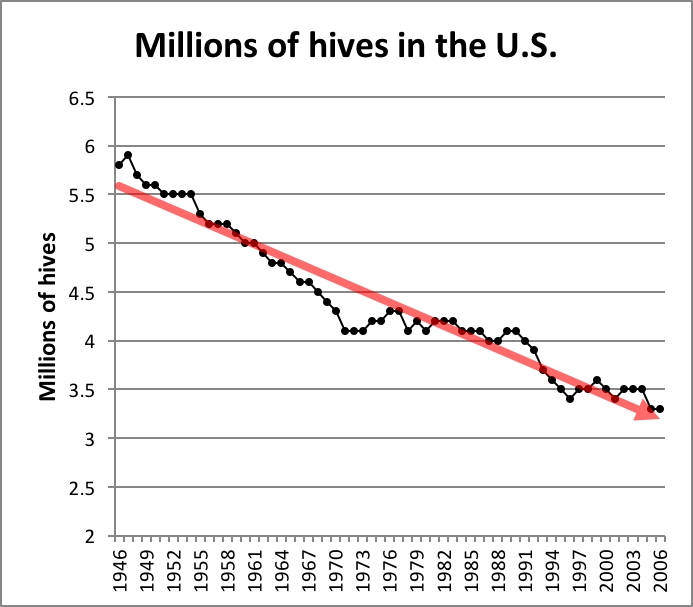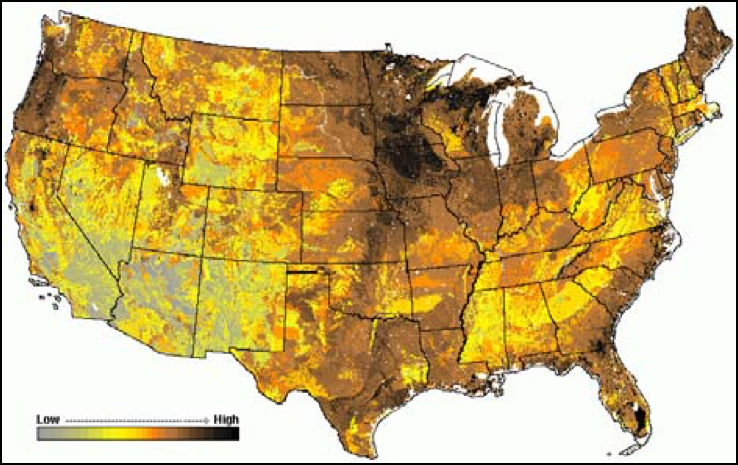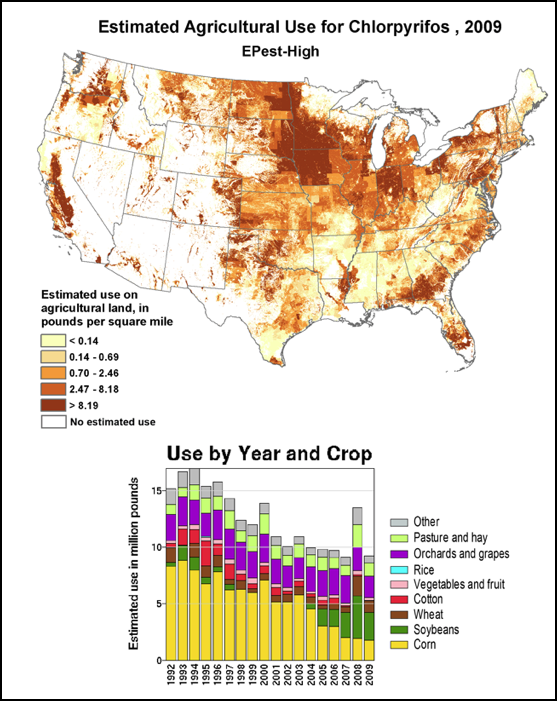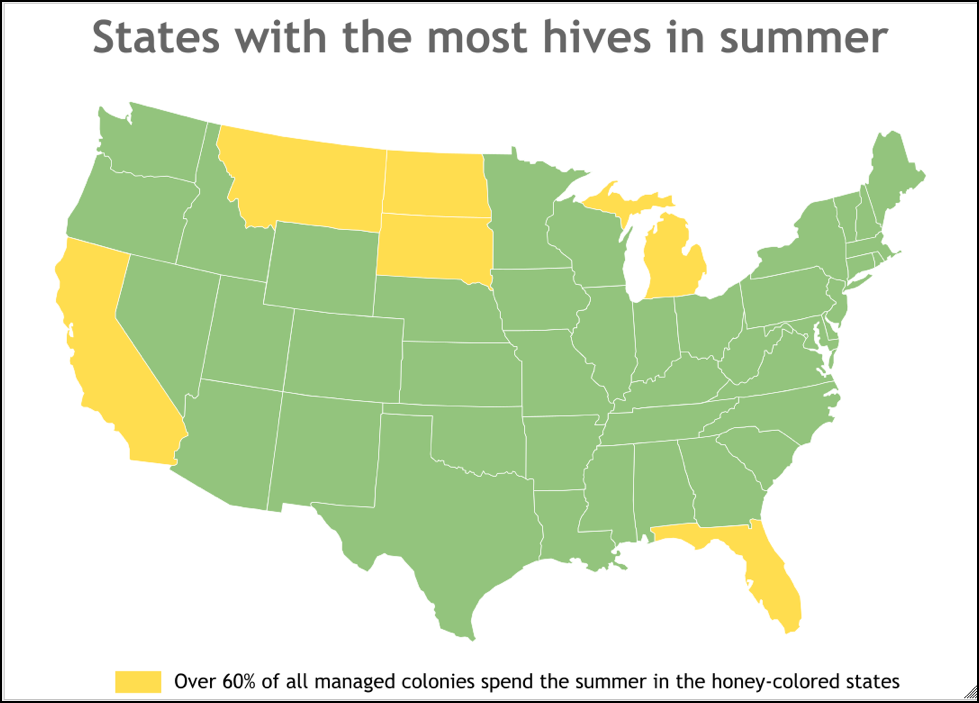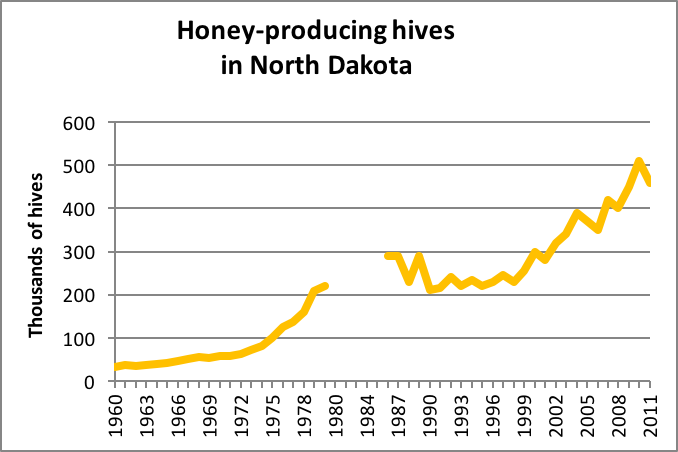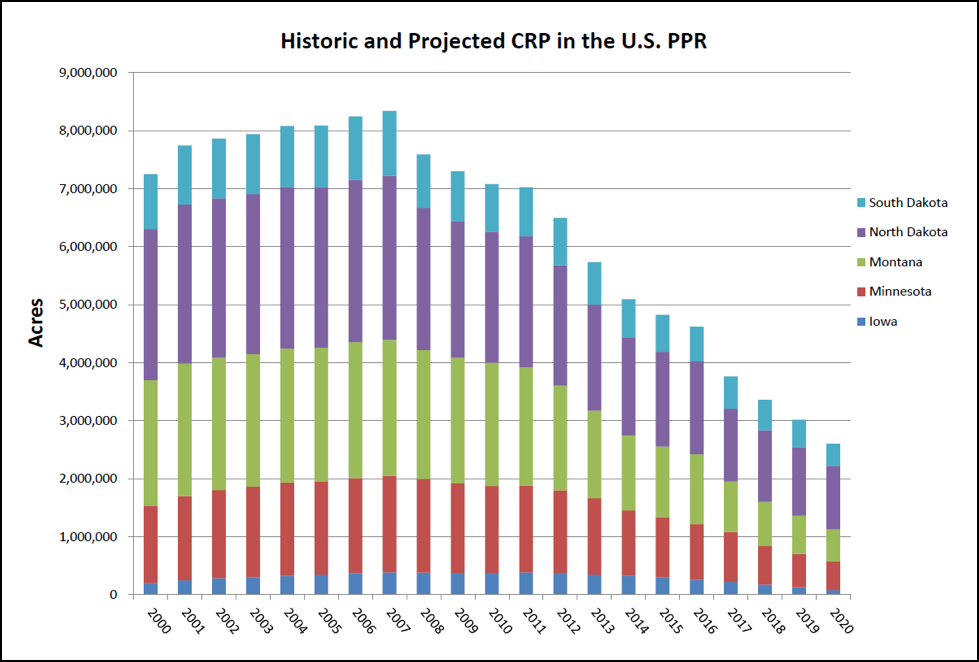Sick Bees Part 18F8: Colony Collapse Revisited – Beekeeping Economics
Sick Bees Part 18F8: Colony Collapse Revisited
Beekeeping Economics
Originally published in ABJ Dec 2013
Randy Oliver
www.Scientificbeekeeping.com
Beekeeping Economics
The Truth Is The First Casualty
Back To Reality
Bee-pocalypse
Beekeeping Economics
Chasing The Bloom
Biologically Productive Land
The Dakotas
Cotton And Citrus In The South
Putting Plant Protection Above Pollinators
Next
Update
Acknowledgements
References
Beekeeping Economics
Mark Twain, a keen observer of human nature, noted long ago that “there is something fascinating about science. One gets such wholesale returns of conjecture out of such trifling investment of facts.” And thus it is yet today with the release of any scientific “facts” relating to colony collapse, pesticides, or GMO’s.
The Truth Is The First Casualty
The publication of the most trivial research result has a similar effect as that of kicking a hive—there is a roar of response. The media, eager to sell sensationalism, and bloggers ready to spin the most trifling findings to fit their biases or agenda, clamor for the fearful public to do something to stop the horrendous “decline of the honey bee” before it causes the collapse of our entire food supply.
People work backwards from their values, filtering the facts according to their pre-existing beliefs [1]. This is certainly the case for the well-publicized elevated colony losses that we’ve been experiencing of late. They have all been wrapped under the moniker of CCD (for which the media have proclaimed a dozen times to have found the “cause”). And everyone wants to blame “CCD” on some egregious thing that we humans are doing.
There is nothing like a good image or compelling story to convince others to your point of view. Some of these images, like the innocent child eating a “toxic” ear of GMO corn on the cob, really stick in people’s minds, no matter the actual truth of the matter. And there is nothing like the resonance of a good story, which like childhood fables, become part of the popular mythology.
One of the most beguiling and persuasive stories is that of the unfortunate pear growers in China’s Sichuan province, who are nowadays forced to pollinate their trees by hand due to all the bees being killed off by pesticides–an alarming example of how badly we can screw things up. Alas, this story also appears to be more fable than fact. Mark Grossman [2] explains that although pesticides are clearly an issue to bees in Sichuan, in reality, the hand pollination, as well as the demise of Sichuan’s bees, was due to economic reasons (I won’t spoil his story). He explains:
Many articles about declining bee populations have a theme and tone that reminds me of those old sci-fi movies from the 1950’s. Somehow, human technological tampering with nature is punished in some awful (and bizarre) way. You can almost read this theme between the lines of more than a few articles — an echoed suggestion that some technological tinkering has angered Mother Nature… And we are being punished by the disappearance of our bees. Then, domino-like, all of modern civilization will fall to ruins…The inaccurate impression of the Sichuan Province as the scene of a bee extinction fits almost too neatly into an increasingly pervasive, though less than articulate, mythology — the mythology of the bee apocalypse.
Back To Reality
The fact is that colonies die for many reasons, exposure to toxins being one of them. The question is to what degree pesticides contribute to our current rate of winter losses. Let’s start by putting pesticide exposure into perspective, following the truism that “all beekeeping is local.” Any effect of pesticides upon bee health would be expected to be correlated with the degree of actual exposure.
Bees placed in agricultural settings are typically exposed to dozens of pesticides, often at high levels. I was curious as to the degree of exposure for U.S. bees, compared to that of bees in other countries. Unfortunately, there’s not much actual pesticide residue data from other than a few countries. But the FAO does keep data on the total amount of pesticides applied per hectare of cropland throughout the world, which I’ve plotted out below (Fig. 1).
Figure 1. Pesticide use on croplands (arable land and permanent crops). Note that pesticide use in the U.S. is below the world norm. One would certainly expect pesticides to be more of a problem to pollinators in the countries to the left. I left out the highest figure, for Costa Rica, which due to its lucrative melon, tomato, potato, pineapple, and sugar plantations, applied 51 kg/ha in 2010—over 20 times the rate used in the U.S.! Source of raw data [[i]].
[i] I created this chart from FAO 2007 figures (2006 for Australia), and other sources. Includes insecticides, herbicides, fungicides, etc. Amounts are for active ingredients when available. http://faostat.fao.org/site/687/default.aspx, http://faostat.fao.org/site/679/DesktopDefault.aspx?PageID=679, http://www.environment.gov.au/soe/2006/publications/drs/indicator/196/, http://lapress.org/articles.asp?art=6449
Looking at the above chart, it is not surprising that pesticides are likely far more of a problem to bees (and beekeepers) in a number of other countries, including China, which applies six times as much pesticide per unit of farmland than does the U.S.
Bee-pocalypse
A popular myth is that of the imminent extinction of the honey bee (as compared to the more worrisome decline of native pollinators worldwide). As a managed form of livestock, the numbers of bee hives at any time is driven by economics—if beekeeping is profitable, hive numbers go up; if unprofitable, numbers go down. So how about the precipitous drop in hive numbers that we’ve all seen plotted out so graphically (Fig. 2)?
Figure 2. We’ve all seen chilling graphs such as this, which suggest that honey bees will reach extinction before long. The actual data is accurate; it is the presentation that is distorted.
But as my buddy Pete Borst points out, it’s all about cherry-picking your dates. So I created a more complete graph (Fig. 3), using data from various sources [4] for a view that better reflects reality.
Figure 3. Estimated numbers of managed bee hives in the U.S. over the long term—a picture that is a bit less grim. The peak was reached near the end of WWII, during which farmers were encouraged by the government to keep bees, and honey prices had skyrocketed due to the shortage of sugar [[i]]. Note that the decline of the bees began long before most of the alleged causes of CCD, driven largely by the lack of economic profitability due to low honey prices [[ii]].
[i] After this article was published, James Fischer posted to Bee-L:
Honey was never the issue. Beeswax still had tactical value in WWII.
During World War II, lots of beeswax was needed as a stabilizer for RDX, an
early form of “plastic explosive”. When it was mixed with beeswax in the
“Woolworth Method”, it was very stable, and it could be used in mines,
torpedoes, and other munitions that might have to sit for months of exposure
to “the elements” without degrading or randomly exploding for no good
reason. A petro-chemical replacement for the beeswax was developed, but it
was tricky to make and use, while beeswax was a known-reliable ingredient.
After the war, RDX plants went back to making bakelite and other plastics,
so the bulk beeswax market went kaput.
I have a thin hardbound book printed during the war instructing ladies in
the basics of beekeeping. I am sure it does not mention explosives at all,
but it certainly did mention “the war effort”.
[ii] Daberkow, S, et al (2009) U.S. Honey Markets: Recent Changes and Historical Perspective. ABJ Dec 2009.
When we look at colony numbers over the long term, the imminent extinction of the honey bee doesn’t seem to be as much of a concern, and the reasons for the ups and downs appear to be more related to economics than to other causes. The uptick at the end is likely due to today’s wonderfully high prices for honey and almond pollination services.
Update Dec 2013: see end of article for discussion on hive numbers in the U.S.
Beekeeping Economics
Simply put, when it’s profitable to keep bees, the number of managed colonies goes up; when it is unprofitable, numbers go down. This is because the vast majority of colonies are kept by professional beekeepers in business to make a profit.
So any discussion of honey bee decline must take into account the profitability of commercial beekeeping. Of late, many of those beekeepers are hurting, their profit margins evaporating due to the need to keep replacing dinks and deadouts, and the lack of good summer forage. This makes any contribution to the problem by pesticides ever the more important. But it is devilishly difficult to tease out exactly which pesticides (or adjuvants) are actually causing the most problems (other than in the case of acute bee kills), and pesticide exposure is different from crop to crop, region to region, and country to country.
And although some campaigners think that banning one thing or another will solve all our problems, the reality is that the interaction between bee biology and agriculture is far more complex. We are still coming to terms with the environmental consequences of the Green Revolution, which revolutionized food production with modern day technology, thus allowing a great increase in the human population, and leading to today’s chemically-dependent intensive farming. Such practices certainly produce more food, but at a severe cost to the environment–notably the loss of pollinator-friendly habitat.
What confuses the issue is that the technologies of reduced-tillage herbicide-intense farming of vast monocultures of high-yielding cultivars, the massive increase in the acreage of soybeans, the move away from pasture and legume rotation, the adoption of genetically-engineered cultivars, the treatment of seeds with insecticides, and the introduction of new classes of insecticides came concurrently with the worldwide shift in colony health due to the varroa/virus complex and Nosema ceranae. The problem is to tease out which factors are actually most contributing to the increased colony morbidity and mortality that we observe today [7].
The answers don’t come easy. Many beekeepers report thriving apiaries surrounded by corn and soy. Others suffer from major losses despite keeping their hives in wildlands far from agriculture. But it is common knowledge among commercial beekeepers that colonies go downhill after being placed in some agricultural areas.
This problem, as documented by recent research by Matthew Smart [8], it that the combination of poor nutrition and pesticide exposure associated with some croplands leads to poorer colony performance. A recent and excellent review by Sinnathamby [9], which analyzed data on crop yield, pollinator populations, and economic value of pollinators for the time period of 1945 through 2010, concluded that:
Results show a significant decline in the number of managed pollinators (specifically honey bees) in most regions of the US; on average, 42,000 colonies of managed pollinators were lost each year from 1945 through 2010. Crop yields increased significantly over the same period [by their calcs, 72% of total U.S. agricultural income for 2010 came from only four crops—corn, soybeans, alfalfa hay, and wheat, none of which are directly dependent upon pollinators]. Agricultural intensification and increased use of inorganic fertilizer and pesticides, which has increasingly replaced crop rotation for both nutrient and disease management and has led to increasing presence of monoculture-type cropping systems, were likely the primary pressures that led to pollinator decline. Recommendations are to enhance both managed and native pollinator management options at all scales, including improving policy decisions, increasing diversity of cropping systems, and enhancing management of natural habitat.
So let’s look at this interaction between intensive agriculture and intensive commercial beekeeping.
Chasing The Bloom
The large migratory beekeepers typically chase paid pollinations and/or certain honeyflows, as well as look for “safe” places to park their hives when they aren’t generating income. Although some have suggested that the physical transportation of colonies is the problem, I don’t buy it—I’ve chased the bloom for years, and my bees clearly benefit from it. I suspect that the answer is that that “bloom” has changed in recent years—less of it, less nutritious, more crowded with other beekeepers, and with more pesticides.
Many beekeepers see their colonies fall apart after going to certain croplands. It appears that the combination of poor nutrition coupled with the cocktail of pesticides is simply too much for the bees to handle. Any number of long-time migratory beekeepers have told me that you can’t move bees from one pesticide exposure to the next and expect them to thrive in the long term. This is a sad indictment of our agricultural system—something clearly is amiss in a system that kills off its pollinators—but that’s the way it is. The most successful beekeepers look for “safe” pasture upon which they can place their hives to recover from previous pesticide exposures. In recent years, those safe pastures are disappearing.
Biologically Productive Land
The large migratory beekeepers tend to seek open, biologically productive lands upon which to place their hives, since that’s where their bees will generally find the best forage (Fig. 4).
Figure 4. Biologically productive lands of the U.S., as measured by the soil organic matter content [[i]]. The darker the color, the more productive the land.
[i] Hargrove, WW and RJ Luxmore (1988) A new high-resolution national map of vegetation ecoregions produced empirically using multivariate spatial clustering. http://gis.esri.com/library/userconf/proc98/proceed/TO350/PAP333/P333.HTM
This biologically productive land has historically been used for various forms of agriculture, including bee-friendly pastureland, but that is changing–between 2011 and 2012, more than 398,000 acres of grasslands, forests and other lands were plowed, cleared or otherwise converted to cropland [11]. This means that that many acres will now be treated with additional pesticides. This correlation is easy to see if we look at another map–that of the use of the insecticide most commonly detected in beebread: chlorpyrifos [12, 13](Fig. 5):
Figure 5. Note that pesticide exposure is part of the deal in those areas favored by commercial beekeepers, as demonstrated by the applications of the insecticide chlorpyrifos–the most commonly detected insecticide residue found in beebread. Chlorpyrifos is highly toxic to both adult bees and larvae, and has a 10-14 day residual half life on foliage. The column chart shows that the use of chlorpyrifos is slowly being phased out on corn and cotton, but increasing in soybeans.
So let’s compare the intensity of pesticide application to the actual distribution of managed hives on the continent (Fig. 6).
Figure 6. The distribution of honey-producing hives during the summer. According to the NASS [[i]], over 60% of honey-producing hives spend the summer in only six of the fifty United States (by order): North Dakota, California, South Dakota, Florida, Montana, and Minnesota (with nearly a third in the Dakotas alone).
[i] http://usda01.library.cornell.edu/usda/current/Hone/Hone-03-18-2013.pdf
It appears from the above maps that commercial beekeepers (other than those being paid to pollinate crops) seek out summer pasture on biologically-productive lands away from the most intense pesticide exposure. The problem is that such wildlands are rapidly disappearing to the plow.
The Dakotas
Commercial beekeepers are no dummies, and look for any fertile lands that are not completely planted to corn and soy or otherwise hit with pesticides. One of the last good places for good summer pasture was the Dakotas—especially North Dakota. The 1985 Farm Bill included the Conservation Reserve Program (CRP), established to pay private landowners (N.D. is 95% privately owned) to remove land from agricultural production for periods of 10-15 years. The program was initially conceived to increase commodity prices, but was continued largely and for its positive environmental benefits to soil and water quality, the conservation of wildlife habitat, and its offsetting of atmospheric carbon. No program in history has done more for landscape-level conservation of soil, water and wildlife habitat on farmland, while offering producers a significant and stable source of income. The program expired in September of this year; reauthorization or another possible extension is being debated by Congress as part of the larger Farm Bill reauthorization debate.
The North Dakota CRP lands created a beekeeper’s dream, so the big boys flocked there (Fig. 7). There was less pesticide risk, and abundant alfalfa and sweet clover which could produce large crops of high-value white honey [15].
Figure 7. Commercial beekeepers flocked to North Dakota after the adoption of the CRP program. In recent years, nearly a third of all honey-producing hives in the U.S. reside in the Dakotas during summer. Note how colony numbers have climbed since almond pollination and honey prices tripled in the early 2000’s [[i]] (no USDA data was collected for the missing years).
[i] vanEngelsdorp and Meixner (2010) op. cit.
Practical application: The only thing that’s kept many commercial operations afloat in recent years is the income from almond pollination. The $4 billion almond industry is completely dependent upon beekeepers. That also means that the almond industry is indirectly supported by government payments to CRP landowners in the Dakotas, since the Dakota CRP lands provide “free” feed for the colonies that will be going to almonds the next year!
The value of the Midwestern CRP program to the almond industry should be taken into account. Many California beekeepers move their bees to Montana and Dakotas, since it’s more profitable for them to do so (provided they make a honey crop and don’t get hit too hard with pesticides) than to leave them at home and feed them through our long dry. The forage provided by the CRP lands feeds a large proportion of the bees that later pollinate almonds—a poor crop in the Dakotas often foreshadows a short supply of bees for the almonds.
But all is not well in Bee Paradise. CRP lands are being rapidly withdrawn from the program due high commodity prices that generate better returns than the CRP subsidies, and to the Farm Bill crop insurance that guarantees that even marginal land planted to corn will put money into the landowner’s pocket. The current Beekeepers’ Lament is that the disappearing CRP lands (Fig. 8) are leaving them no place to go for “safe” summer pasture.
Figure 8. Enrollment in the Conservation Reserve Program for the Prairie Potholes Region. The declining enrollment is hurting beekeepers and wildlife—read K. McDonald’s blog at [[i]]. Graph courtesy Eric Lindstrom of Ducks Unlimited [[ii]]. Data source Farm Service Agency [[iii]].
[i] http://www.bigpictureagriculture.com/2013/03/weve-lost-9-7-million-acres-of-crp-land-in-five-years-334.html
[ii] http://www.ducks.org/conservation/public-policy/crp
[iii] http://www.fsa.usda.gov/FSA/webapp?area=home&subject=copr&topic=rns-css
Another problem in the Dakotas is the pesticide use in sunflowers. There are over a million acres of sunflowers planted in the Dakotas, and since the flowers are often sprayed during bloom with chlorpyrifos, pyrethroids, and other nasties, colonies suffer. The North Dakota Department of Agriculture is aware of the problems that beekeepers are having in the State. Unfortunately, they have made it clear that protecting pollinators comes second to protecting landowners’ crops.
Cotton And Citrus In The South
Beekeepers in more southerly areas often move bees to cotton or citrus for honey production. Neither crop is dependent upon pollination, so there is less incentive for the growers to protect bees. Cotton has traditionally been one of the most insecticide-intense crops, and since it produces extrafloral nectar, it can be dangerous to bees even when not actually in flower. Things improved with the eradication of the boll weevil and the adoption of Bt GMO cotton and insecticide-treated seed, the combination of which greatly reduced insecticide use. But this has now allowed lygus bugs (tarnished plant bugs), which were previously controlled as a collateral result of the spraying of broad-spectrum insecticides, to proliferate:
Historically during the flowering and boll maturation periods, tarnished plant bugs were inadvertently controlled by organochlorine, organophosphate, carbamate and pyrethroid insecticides targeting boll weevil and heliothines. The success of the boll weevil eradication programs and wide-scale adoption of Bt cotton eliminated many of those applications. In addition, the use of more selective insecticides that target Lepidopteran pests (i.e., spinosad, indoxacarb and emamectin benzoate) increased survival of tarnished plant bugs. Finally, tarnished plant bug resistance to a variety of insecticides (organophosphates, carbamates, pyrethroids) in the mid-south US has contributed to the elevated status of this insect pest [20] an informative read].
This is a good example of the complexity of pest control. When the cotton growers adopted eco-friendly practices to reduce insecticide applications, tarnished plant bugs were able move into cotton from nearby alfalfa, almonds, tomatoes, and safflower. A Mississippi beekeeper tells me that cotton may now be sprayed up to 14 times a season to control them and other pests. More sustainable IPM of lygus uses attractive strips of alfalfa to draw them away from cotton and to promote the growth of beneficial predators [21], and new lygus-specific GM cultivars are being developed [22].
Citrus is another highly attractive crop to bees and beekeepers. In recent years, excessive use of systemic Temik (aldicarb) made the nectar toxic to bees in some areas of Florida (its use is now disallowed). In order to protect bees, in some California citrus counties there are restrictions on the spraying of certain insecticides during the bloom period [23]. Currently, Florida citrus growers are getting hammered by citrus greening, transmitted by the Asian Citrus Psyllid, which is now also showing up in California. The economic impact to Florida has been over 6 billion dollars, and growers are desperately trying to save their orchards by applying systemic neonicotinoids to nonbearing trees, making areas of Florida officially off limit to bees. In bearing orchards, wide-spectrum insecticides are recommended, but not while bees are present. Unfortunately, the State does not appear to be willing to levy meaningful fines against those who ignore application regulations and manage to wipe out some poor beekeeper’s operation [24].
The citrus industry is now in a quandary—the only salvation on the horizon appears to be the adoption of orange trees genetically modified to specifically resist citrus greening disease. The question is whether the public will accept GM orange juice. An informative and sober discussion of this issue can be found at [25].
Putting Plant Protection Above Pollinators
Let’s face it—no farmer is willingly going to allow a pest explosion to consume the crop that he worked so hard to grow. And many will also apply unnecessary pesticides out of habit or as risk insurance. No one wants to kill pollinators, but when push comes to shove, pollinators often lose. If a grower is renting pollination services, he has an incentive to minimize damage to the bees that he’s paying for. But how about the grower of crops that don’t require bees, but are nonetheless attractive to them, such as hay alfalfa, citrus, cotton, and soybeans?
The grower could argue that the bees (and the beekeeper) are freeloaders, profiting from the production of his land without his permission. It is understandable that if he is facing a sudden pest explosion that he may care less about some out-of-sight hives than in applying an insecticide to save his crop. The hard reality is that the best that beekeepers can do is to work with the growers and applicators to minimize pesticide problems, and to push the State Lead Agency to enforce compliance with label restrictions.
So long as farmers plant monocultures of particular crops, pests will always be an issue. The sole reliance upon synthetic pesticides is like playing whack-a-mole, with new pest problems constantly popping up. The more forward-looking agronomists are seeing that in order to move toward more sustainable practices, that we will need to approach agricultural production in the agro-ecological context [26], which includes integrated pest management as well as providing habitat and protection of beneficial insects and pollinators.
Next
The “honey bee/pesticide complex.”
Update
11/17/2013 update: We were discussing the breakdown of colony numbers on Bee-L. I thought that some of my calculations might be of interest:
In the 2007 Census of Agriculture, there were only 28,000 “farms” reporting having bees, with a total of just under 3 million hives. The average number of hives per reporting farm was 104.
For South Dakota, the average was 1716.
For North Dakota, 2257.
California 1073.
Montana 649
Texas appears to have more recreational beekeepers at an average of 100 hives.
For the first four states above (all with average hive numbers above 600), the total number of reporting beekeepers was 1802. So I’m thinking that there are likely more than 600 commercial beekeepers managing large numbers of hives.
For the six states that account for over half the hives in the U.S., the total number of hives is 1,659,000; the total reporting beekeepers was 2856, for an average of 580 hives each. If we use the equation
T = R x Mr + C x Mc,
where T = total number of hives, R = # of recreational beekeepers, C = # of commercial guys, Mr = mean number of recreational hives (10), and Mc = mean number of hives for a commercial guy (2500), we can then solve for C, since we know that C + R = 2856.
The result is 669 commercial guys running 1,672,500 hives and 2790 recreational beekeepers running 27,900 hives.
The commercial guys would account for 23% of the beekeepers in those states.
The commercial guys would be running 98.5% of the hives.
If instead we set the average number of hives per recreational beekeeper at 5, and for the commercial guys at 3000, then we get a slightly different result:
549 commercial, and 2316 recreational. Commercials would make up 19% of all beekeepers, and run 99.2% of the hives.
In either case, if we extrapolate to the entire U.S. population, there would be about 1000 – 1300 commercial beekeepers, running 99% of the hives. Obviously, these figures underestimate the total number of hives in the U.S. (accounting for only a bit over 3 million hives). But it’s likely safe to assume that the additional numbers are run mainly by recreational beekeepers with only a few hives.
That adjustment, plus an adjustment for the sideline beekeepers, would bring the percentage of commercial beekeepers down to a lower percentage.
Let’s look at the figures for the whole country. If there were 1000 commercials averaging 3000 hives, that would be 3 million hives. Then add 125,000 recreationals averaging 5 hives each = 635,000 hives.
Total 3,625,000 hives–likely very close to the ballpark figure if we count all recreational hives.
If those figures hold, that would mean that less than 1% of beekeepers managing 83% of the country’s hives.
>But I simply don’t see how you can insist on an average of 5 hives per.
Heck Pete, you know that I never “insist” on anything. I was figuring that the sideliners with a few hundred hives would be run into the commercial group, bringing down that average somewhat.
As far as the 5-hive estimate, that was simply a number to plug into the equation as a possible example. But not arbitrary. I’ve met a great number of recreational beekeepers. An average of 5 live colonies does not seem too far off the mark. And based upon the repeat sales of nucs and packages to them, a lot of time their average unfortunately approaches zero.
I’ve been curious about the actual breakdown for some time. Obviously, the USDA figures greatly underestimate the total number of “beekeepers” (or at least those who have pine boxes on their property). The incredible increase in the membership of bee clubs in the past few years suggests that the number of recreational beekeepers is quite large–but even 2000 per state would only total 100,000.
About the only firm figure that we have is the number needed for almond pollination–about 1.6M, few of which are supplied by recreational and out-of-state sideline beekeepers. And this does not count the commercial guys who forgo almond pollination.
So perhaps we should begin by trying to estimate total hive numbers. If we assume 100,000 recreationals at 5 hives, that’s 500,000. Then add an arbitrary 1/5th that many as sideliners averaging 50 hives–that’s 1 million. Then add say another million commercial hives not going to almonds. And finally the 1.6M in almonds. The total would be 4.1M–perhaps not far off the mark.
The breakdown would then be 63% commercial, 24% sideliner, 13% recreational.
Again, I’d love to hear from anyone who can improve on these estimates.
Acknowledgements
As always, I appreciate the invaluable assistance of my research collaborator Peter Loring Borst.
References
[2] I created this chart from FAO 2007 figures (2006 for Australia), and other sources. Includes insecticides, herbicides, fungicides, etc. Amounts are for active ingredients when available. http://faostat.fao.org/site/687/default.aspx, http://faostat.fao.org/site/679/DesktopDefault.aspx?PageID=679, http://www.environment.gov.au/soe/2006/publications/drs/indicator/196/, http://lapress.org/articles.asp?art=6449
[3] I used data from the following sources. The NASS changed their accounting of hive numbers in the mid 1980’s, which I adjusted for. Unfortunately, the NASS website was down during the government shutdown, during which I wrote this piece, so I couldn’t double check some numbers.
Morse, RA & R Nowogrodzki (1983)Trends in American Beekeeping, 1850-1981. ABJ May 1983.
Muth, MK, et al (2003) The fable of the bees revisited: causes and consequences of the U.S. honey program. The Journal of Law and Economics. http://www.personal.kent.edu/~cupton/Senior%20Seminar/Papers/bees.pdf
Hoff, FL and JK Phillips (1989) Honey: Background for 1990 Farm Legislation. USDA Staff Report No. AGES 89-43
NASS—with data after 1986 adjusted to account for the NASS no longer counting operations with fewer than five colonies after that date.
[4] After this article was published, James Fischer posted to Bee-L:
Honey was never the issue. Beeswax still had tactical value in WWII.
During World War II, lots of beeswax was needed as a stabilizer for RDX, an
early form of “plastic explosive”. When it was mixed with beeswax in the
“Woolworth Method”, it was very stable, and it could be used in mines,
torpedoes, and other munitions that might have to sit for months of exposure
to “the elements” without degrading or randomly exploding for no good
reason. A petro-chemical replacement for the beeswax was developed, but it
was tricky to make and use, while beeswax was a known-reliable ingredient.
After the war, RDX plants went back to making bakelite and other plastics,
so the bulk beeswax market went kaput.
I have a thin hardbound book printed during the war instructing ladies in
the basics of beekeeping. I am sure it does not mention explosives at all,
but it certainly did mention “the war effort”.
[5] Daberkow, S, et al (2009) U.S. Honey Markets: Recent Changes and Historical Perspective. ABJ Dec 2009.
[6] You may wish to refer to Figure 6 at https://scientificbeekeeping.com/sick-bees-part-18e-colony-collapse-revisited-genetically-modified-plants/
[7] Matthew Smart, in prep, presented at the Monsanto Honey Bee Health Summit.
[8] Sinnathamby, S., Assefa, Y., Granger, A. M., Tabor, L. K., & Douglas-Mankin, K. R. (2013) Pollinator Decline: US Agro-Socio-Economic Impacts and Responses. Journal of Natural and Environmental Sciences, 4(1), 1-13. (Broken Link!) http://www.asciencejournal.net/asj/index.php/NES/article/view/430/pdf_111
[9] Hargrove, WW and RJ Luxmore (1988) A new high-resolution national map of vegetation ecoregions produced empirically using multivariate spatial clustering. http://gis.esri.com/library/userconf/proc98/proceed/TO350/PAP333/P333.HTM
[12] Mullin 2010
[13] (Broken Link!) http://usda01.library.cornell.edu/usda/current/Hone/Hone-03-18-2013.pdf
[14] Erlandson, GW & JL Hauff (1981) Marketing North Dakota honey. Agricultural Economics Report No. 148
[15] vanEngelsdorp and Meixner (2010) op. cit.
[16] http://www.bigpictureagriculture.com/2013/03/weve-lost-9-7-million-acres-of-crp-land-in-five-years-334.html
[19] Bergé, JP & AE Ricroch (2010) Emergence of minor pests becoming major pests in GE cotton in China. GM Crops 1:4, 214-219. (Broken Link!) http://isletsociety.org/journals/gmcrops/05BergeGMC1-4.pdf
[21] Baum, JA, et al (2012) Cotton plants expressing a hemipteran-active Bacillus thuringiensis crystal protein impact the development and survival of Lygus hesperus (Hemiptera: Miridae) nymphs. J Econ Entomol. 105(2):616-24.





